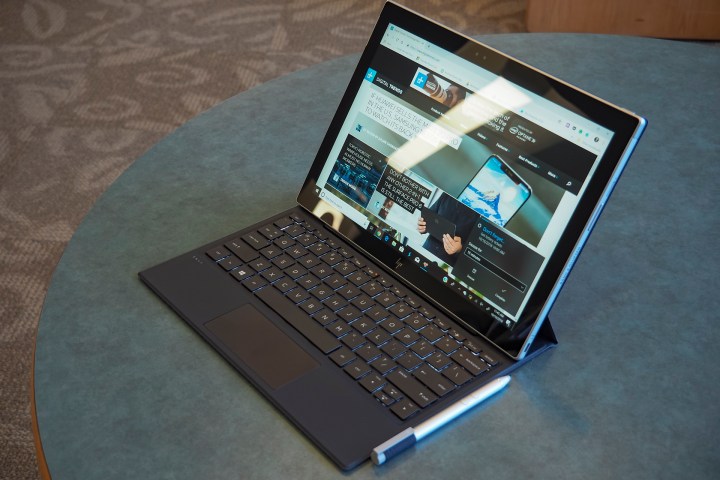
If you bought a Windows laptop or tablet recently, or are looking to buy one this holiday, there may be a chance that your device shipped with an unsupported version of Microsoft’s Windows 10 operating system. Because Microsoft delayed its latest version of Windows, PC manufacturers creating Always-Connected PCs powered by Qualcomm’s ARM-based Snapdragon chipsets had to make the untenable decision to either halt shipments of laptops until Microsoft’s operating system was ready or ship their machines with an unsupported version of Windows.
The problem stems from Microsoft halting its Windows 10 October 2018 Update, which has a build number of 1809, after widespread reports that the software introduced new problems, such as bugs with drivers and a glitch that deleted user files after the update was installed. Though Microsoft is calling this major Windows 10 release as its “October 2018 Update,” the company still has not announced when the software will be re-released to consumers after pulling the update last month, which is creating problems for manufacturers creating Windows on ARM systems.
The current version of Windows 10, which has a build number of 1803, does not support Qualcomm’s Snapdragon 850 chipsets used on these devices. At this point, at least a few retail Windows on ARM systems from Samsung and Lenovo are shipping with the older 1803 build, and this could lead to performance and compatibility issues as this version of Windows wasn’t designed to officially support ARM-based processor designs.
“I went to BestBuy today and found a Lenovo device with a Snapdragon 850 in it and it was running 1803,” Petri reporter Brad Sams wrote. “If you look at Microsoft’s official support documentation for versions of Windows and processors, the 850 is only designed to run on 1809 which is, right now, the Schrodinger’s version of Windows. Which means that the devices that are being sold today, with a Snapdragon 850, are shipping with an untested iteration of Windows.”
It’s unclear how the user experience will translate to the Always-Connected PC platform’s success in the future, as Microsoft is only in the early stages of diversifying Windows’ existence beyond the x86 processors from Intel and AMD. The Always-Connected PC platform was, in large part, designed to allow slim, lightweight notebooks and tablets to compete against the iPad and Chromebooks with long battery life, access to Windows apps, and ship with an LTE modem to reduce reliance on Wi-Fi for internet connections.
The problem with the delayed Windows update isn’t limited to Windows on ARM systems. Manufacturers of machines running AMD or Intel chipsets are also affected by the delayed October 2018 Update, according to Petri, since they cannot launch the new systems if the machine’s marketing materials advertise new features found only in the October 2018 Update.


